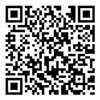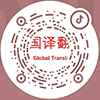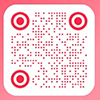Specific Solutions
Are Rare Language Translations Expensive
You're Not Just Paying for Words—You're Investing in Accuracy, Access, and Reach
In addition to major languages like English, Chinese, and Japanese, more and more businesses today require rare or less commonly used languages for translation. These include:
Arabic, Thai, Hungarian, Czech, Ukrainian, Greek, Vietnamese, Hebrew, Romanian, Dutch, Turkish, Indonesian, and many others.
At Elite Translation, we’re often asked:
“Why is rare language translation more expensive?”
“Can’t we get a cheaper option?”
“Why is this more costly than English or Japanese?”
The answer is simple:
Rare languages aren't overpriced—they’re undervalued in how much expertise they demand.
Why Rare Language Translation Typically Costs More
It’s not about the price tag—it’s about what goes into doing it right.
1. Qualified Translators Are Rare
Professional translators for many of these languages are limited in number. They often reside in the target language’s native region and have to be carefully vetted for industry knowledge and language skills.
2. The Linguistic Complexity Is Higher
Languages like Arabic (written right to left), Polish (with extensive declensions), or Vietnamese (with tonal markers) are more structurally complex than English or Mandarin. Accuracy takes time and expertise.
3. Terminology May Not Be Standardized
In technical or legal fields, standardized glossaries may not exist in rare languages. Translators must conduct research and consult specialists to ensure precise usage.
4. Multilayer Review Process
At Elite Translation, every rare language project undergoes:
Native-language translation
Native-language revision
Terminology review
Optional bilingual alignment
We don’t just translate—we ensure credibility, consistency, and compliance.
When Do You Need Rare Language Translation?
Market entry in Southeast Asia, Central Asia, Eastern Europe, the Middle East, or Africa
Regulatory or compliance documents for local government or business filings
Marketing materials or packaging localization
Manuals, safety guides, installation instructions
eCommerce and software interface translations
Legal proceedings, notarized contracts, or employment documents
Cross-border HR, onboarding, and training materials


















